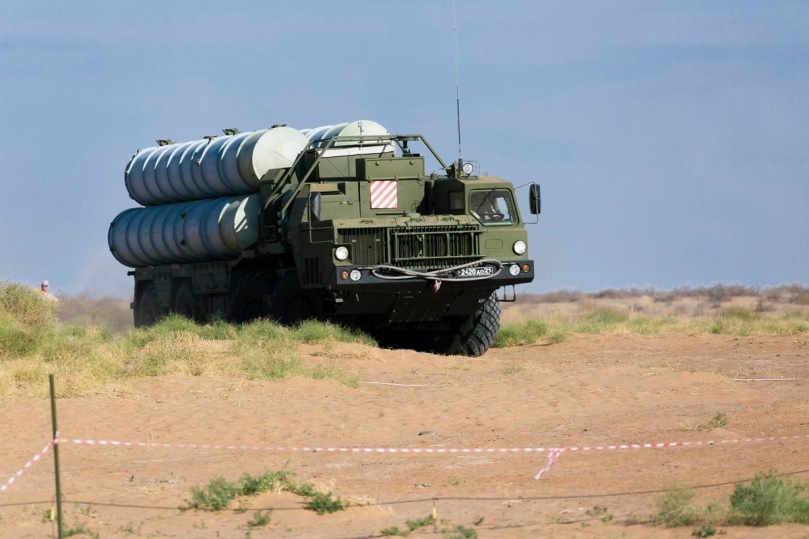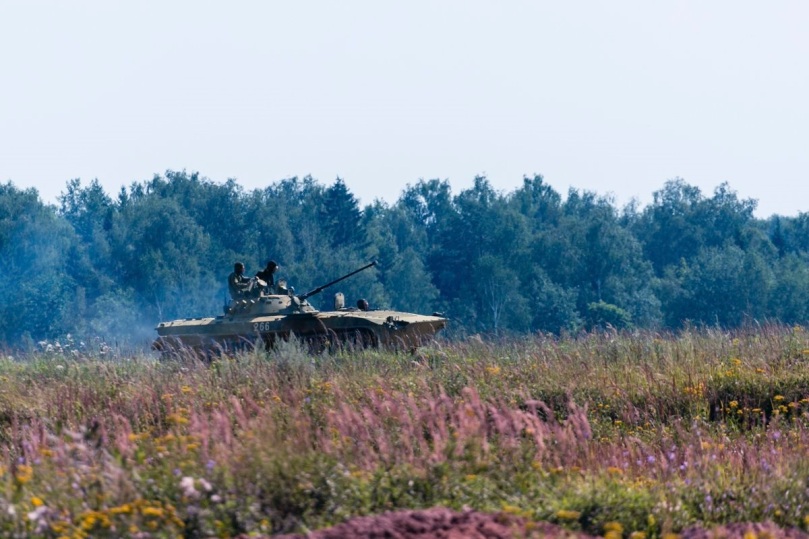Well the good news is that phase one ended today and we’re all still here. The bad news is that means phase two starts tomorrow. Phase one is best summarized as the defensive component of the exercise. Russian forces spent their time sorting out command and control, deploying forces to theater and forming a regional combat grouping out of the different types of forces under their command, along with planning out strategic operations. I guess phase two is when they’re going to do NATO rotten.
In phase one the VKS spent its time defending key civilian infrastructure, conducting reconnaissance, escorting rebasing long range aviation and taking down enemy cruise missiles in coordination with ground based air defense. Borisovksy and Osipovichesky practice ranges saw lots of action today, where enemy diversionary groups were successfully taken out.
The results of phase one are in: Russia and Belarus successfully defended against an attack from NATO members and inflicted high costs during the enemy’s advance. Phase Two will involve maneuver warfare and offensive operations to destroy adversary forces, along with a strong focus on logistics. The ranges hosting most of the live fire exercises include Borisovsky in Belarus and Luga in Leningrad Oblast (south of St Petersburg)
BLUF: Russian forces spent their time conducting strikes with fixed wing and rotary aviation, armor and artillery units engaged the enemy, VDV was busy shooting down drones, logistics units and engineers had a lot of work supporting operations, and the Baltic Fleet sortied out to fight.
VKS (Aerospace Forces) – Su-35s escorted Su-34s on strike missions. The Su-34s hit targets at Kingisep practice range, wiping out enemy armored formations and mechanized infantry. Su-24MPs did the recon ahead of the Su-34 strike package (which is odd given there are plenty of drones now to do this type of job). Seems this was an exercise chiefly with dumb unguided bombs, leveraging SVP-24 Gefest system for more accurate bombing with unguided munitions. Other VKS units spent their time dogfighting and striking enemy logistics units. Su-27s and Su-24s stood in for enemy forces. The Russian air superiority team included Su-27s, Su-35s, Su-30SMs and Mig-31s. Their target set ranged from enemy aircraft to cruise missiles.
VDV (Airborne) – Detachments from the three divisions involved in Zapad were busy with air defense against enemy drones, namely the 76th at Pskov. Seems they shot down more than 40 drones with Strela-10M, Igla MANPADS and ZU-23 artillery. Other VDV units focused on command and control, setting up field units with Polet-K and Andromeda-D systems (based on BTR platforms). Supposedly 30 command vehicles were deployed during this phase, setting up comms in the 500-2000km range. VDV detachments from 106th Tula Division tried out new gear for the first time during an exercise, seems BMD-4M and BTR-MDM (Rakushka). No word on what the 98th was doing, but no doubt they’re winning somewhere.

Seems another battalion of VDV is getting ready for airdrop, 400 soldiers and 10 vehicles aboard 10 Il-76s are getting ready according to the MoD.
Meanwhile in Belarus
At the Borisovsky range MSTA-S self-propelled artillery took up positions, while armored columns from 1st Tank Guards Army (likely 6th BDE) arrived to shoot things. Most of the action was at Osipovichsky and Borisovsky ranges, where diversionary-reconnaissance groups were being killed all day long. Supposedly the weather is less than amenable, but elements of the 1st Tank Army are at the training ranges as planned. Seems this is the first exercise where the latest variants of T-72B3 tanks are being tried out, presumably this is the upgrade with a better engine and sidescreens.

MTO units (material-technical support) were busy setting up repair fields to restore damaged equipment at the live fire ranges in Belarus. Their job is to train in evacuating and repairing damaged tanks and mechanized equipment. The unit in question is the Western MD’s independent MTO brigade. Some of the gear includes KET-L, BTS-4, along with BZEM-K and TPM, along with MTO-UB-2 Ural. The MTO brigade brought mobile repair shops with it, equipped with BAKM 1040 BK cranes.

Russian military police on BTR-82As practiced receiving surrenders of wounded enemy soldiers. NATO diversionary groups had a rough day at several points and had to give up.

Western MD
2nd Tamanskaya Division (1st Guards Tank Army) finally showed itself. It’s artillery regiment was at Luga firing from MSTA-B towed artillery and BM-21 Grad MLRS. Iskander-M and older Tochka-U missile units were busy simulated electronic fires in Leningrad Oblast, presumably these are missile regiments from Kaliningrad which still has Tochka-U and Leningrad Oblast which was upgraded to Iskanders a long time ago. Their targets were massed enemy armor formations in the 30-100km range. Other artillery and mortar units involved in this live fire exercise employed 2S12 Sani mortars, 2B14 Podnos mortars, and Tornado MLRS.
Engineer-sapper units were supplying drinking water using SKO-10 purifying stations, along with three square meals a day. This is apparently an accomplishment. Others were busy clearing mine fields ahead of the ground forces’ advance. Meanwhile MTO units in Leningrad Oblast were practiced extraction and repair of damaged armor and mechanized equipment near the Luga firing range. Other duties included your run of the mill setting up field bases, ammo dumps, repair and overhaul facilities. They spent the day repairing T-72B3 tanks, BTR-82A APCs, and BMP-2 IFVs.
Mi-35M, Ka-52, and Mi-8AMTSh helicopters from the combat aviation brigade were also at the Luga training range destroying enemy armor and equipment. S-400, S-300 and Pantsir-S1 systems were deployed to provide air defense in the region.

Not much word from other districts, somewhat drowned out by all the inane awards from the Army 2017 games. It seems Russia’s info operation sees Zapad 2017 and the Army games as on par in importance.
Central MD – S-400 units moved out to Ashylyk range in Astrakhan near the border with Kazakhstan.

Baltic Fleet – 11th Army Corps had a lot on their hands in Kaliningrad. Some practiced urban assault and retaking positions held by diversionary groups. The T-72B1 equipped tank battalion rolled out to engage enemy forces supported by artillery detachments with 2S3 Akatsya, BM-21 Grads and towed artillery. The 11th Army Corps has somewhat antiquated equipment but it’s good enough.
The Baltic Fleet’s minesweepers ventured out, including two project 12700 and three older project 10750s, to practice clearing contact and non-contact mines. Four Steregushchiy-class corvettes were busy with air defense drills. Russian Su-24s and Ka-27 helicopters served as simulated enemy targets. The corvettes ran short range live fire exercises and over the horizon drills against enemy coastal defenses that were beyond visual sight. About 20 ships of various classes sortied out from the Baltic Fleet, including the bigger corvettes, missile boats and minesweepers.

Notable photos:
Russia’s MoD started the day off by tweeting ‘good morning’ with this photo

Sappers clearing mines (I don’t know why but spacemen with flyswatters look funny)



[…] Źródło: Zapad watch – summary of day three […]
LikeLike
Reblogged this on Zenobiusz.
LikeLike
How many real casualties during the exercise is reported?
LikeLike
so far there are no official casualties, in the run up to the exercise there was an accident at the Luzhsky range where a tank shell ricochet into engineers killed one and wounded 5 others –
LikeLike
[…] to Russia Military Analysis to read Michael Kofman’s take on each day of Zapad: Day 1 Day 2 Day 3 Day 4 Day 5 Day 6 Day 7 Summary: The Zapad […]
LikeLike